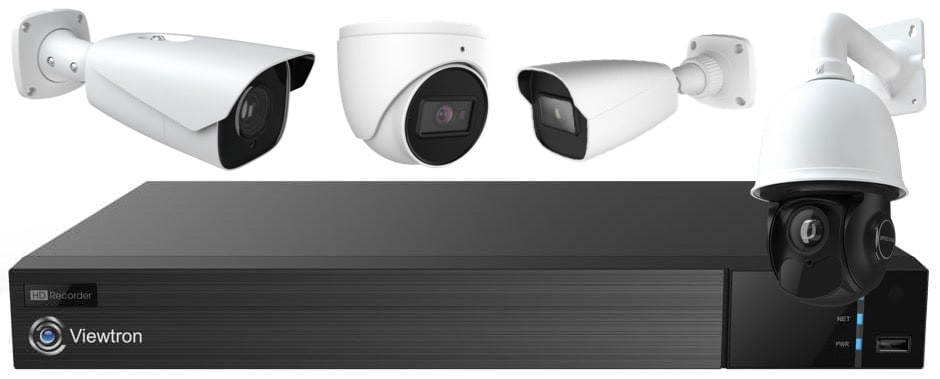The WIFI-EN95610 wireless security camera system is a p
oint to multi-point system that can transmit video signals from security cameras at multiple locations to a central point (such as between separate buildings). This point to multi-point wireless system consists of (2) transmitters, (1) receiver and (1) 360-degree omnidirectional antenna. These wireless antennas are capable of transmitting 150+ MBPS of TCP/IP up to 1500 feet with the 10dBI Omni antenna. Please note that an unobstructed direct line of sight installation is required. There can be no buildings, tree, or other objects that block the line of sight between the transmitting and receiving antennas. CCTV Camera Pros typically supplies this system to transmit video signals from security cameras and surveillance DVRs between buildings, but it can be used with any IP network devices.
These are long-range outdoor antennas that at operate on 5.8Ghz frequency. One antenna acts as the transmitter and the other acts as the receiver to create a wireless network bridge. This WIFI bridge can transmit multiple network IP cameras or CCTV cameras (using
network video servers) to a central DVR/NVR. Click here for a sample wireless installation explanation. The main purpose of the system is to provide a cost-effective solution for remote and hard-to-reach camera locations where dredging and cable laying is not practical or is too expensive.
Works with Indoor & Outdoor IP Cameras

The WIFI-EN95610 point to multi-point wireless system works with all
IP cameras (indoor and outdoor). CCTV Camera Pros highly recommends Viewtron IP cameras. You can learn more here about wireless system installation.
Wireless Security Camera System Features
- Omni-Directional Wireless Network Transmission up to 5,000 feet
- System Includes 2 Transmitters, 1 Receiver, 1 Omni-directional Antenna
- 10dBi Omni-directional / 360 degree antenna
- Additional Transmitters Can Be Added
- Point-to-Multi-Point Wireless Applications
- Data Transfer Rate of up to 150+ Mbps
- Wireless PTZ Camera Controls
- Transmit multiple IP Security Cameras
- Transmit multiple CCTV Cameras using network video servers
- Wireless Connect a CCTV DVR at a location with no Internet Access
- Rugged, weatherproof IP66 enclosure
- CAT-5 / RJ-45 Ethernet Interface
- Power Over Ethernet Injector Included
Custom Wireless Surveillance Systems

Not sure exactly what you need? Do you require a more complex setup and need some advice? Our system engineers can help design a wireless video surveillance system that fits your needs and can include any of the following parts: wireless access points
point to point, point to multi-point / multiple buildings, long-range wireless antennas, indoor and outdoor IP cameras, PoE network switches, NVRs (network DVRs for IP cameras), hybrid DVRs that work with analog and IP cameras, cables, and any other accessories and tools that you need. Please click here to get started and a sales engineer with be in touch with you shortly.

Wireless System Mount Options

The WIFI-EN95610 system comes standard with pole mounts straps. The optional mounting bracket supports wall and ceiling mount.
Here are some typical installation examples of how the WIFI-EN95610 system can be used in wireless video surveillance applications. Please click on any of the installation diagrams for a larger view.
Wireless IP Camera Systems

In the above example, the 360-degree omnidirectional antenna and access point are installed at a central building. The access point is connected to a network router. A
network video recorder (IP camera DVR) is connected to the same router. The transmitting antennas are mounted on two separate buildings and confirmed to have an unobstructed direct line of sight to the Omni antenna. One of the transmitters is connected to an outdoor IP camera and the other to an indoor dome IP camera. The NVR at the central building can record video from both IP cameras using the WIFI bridge that is created.
Please note, that although these wireless antennas need to be mounted outdoors with a direct line of sight to connect, the network devices that the antennas are connected to can be located indoors or outdoors.









